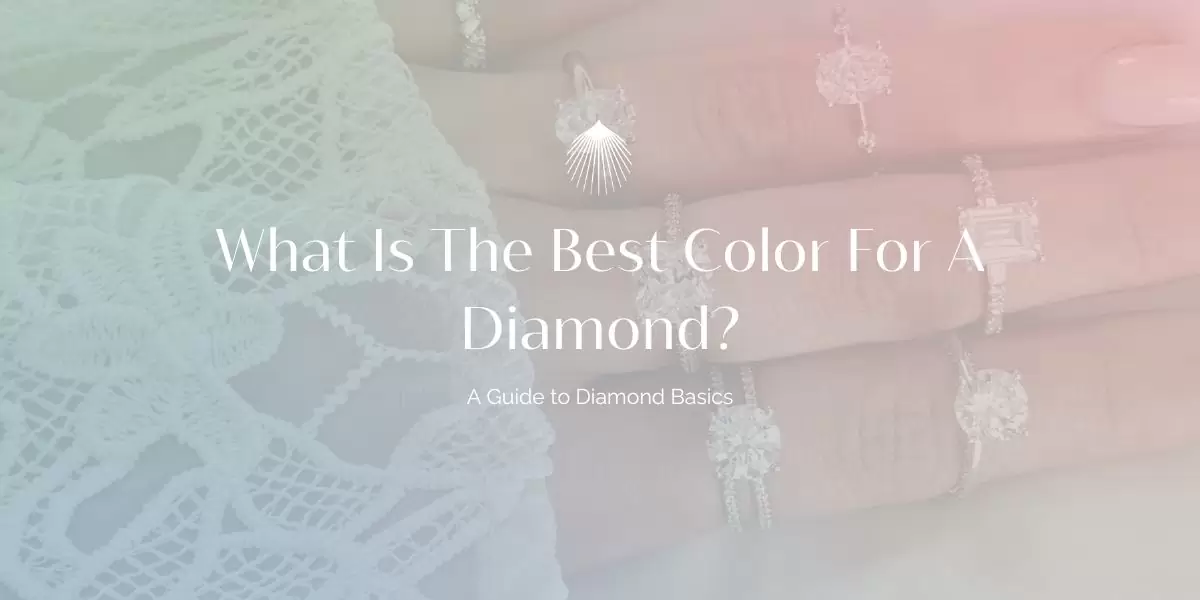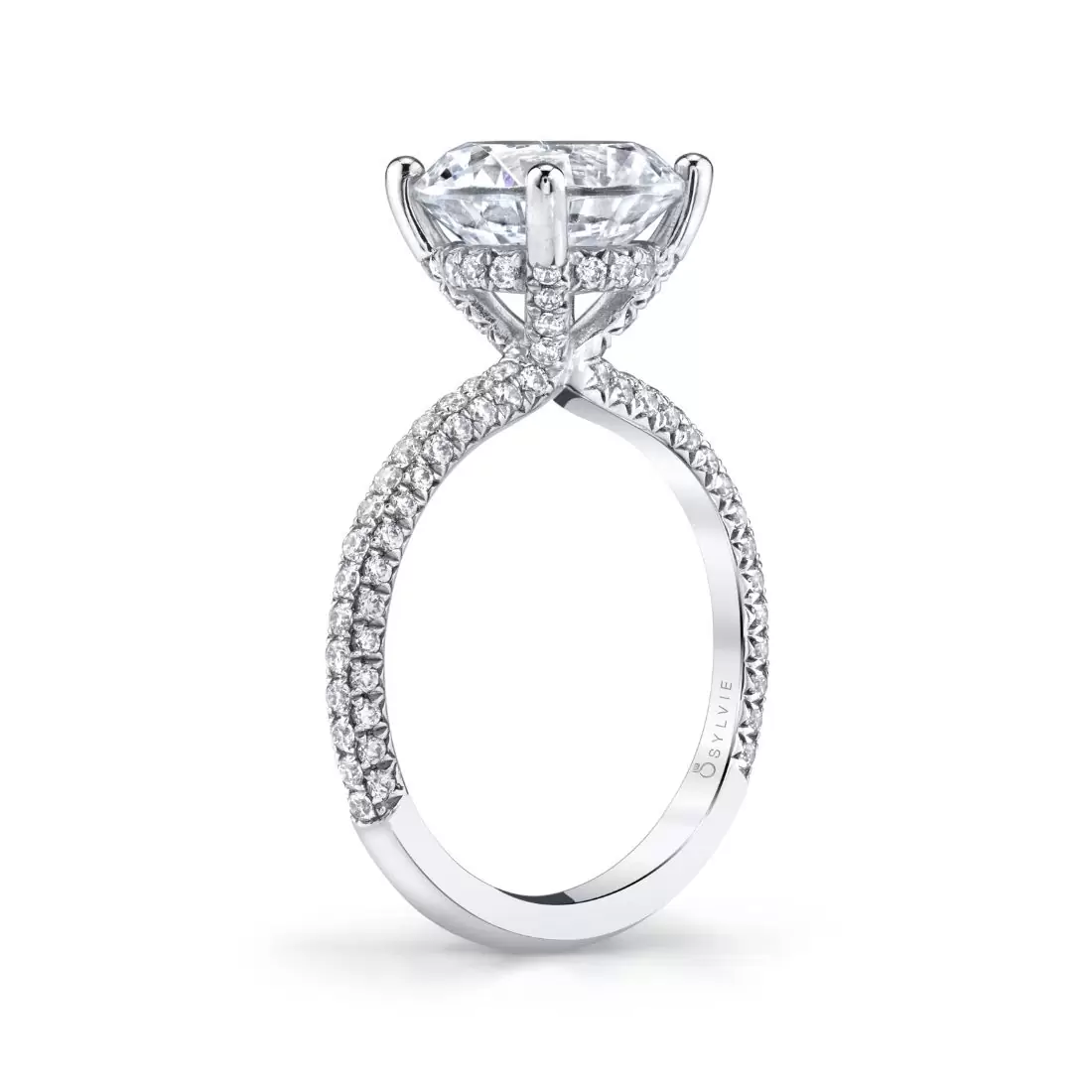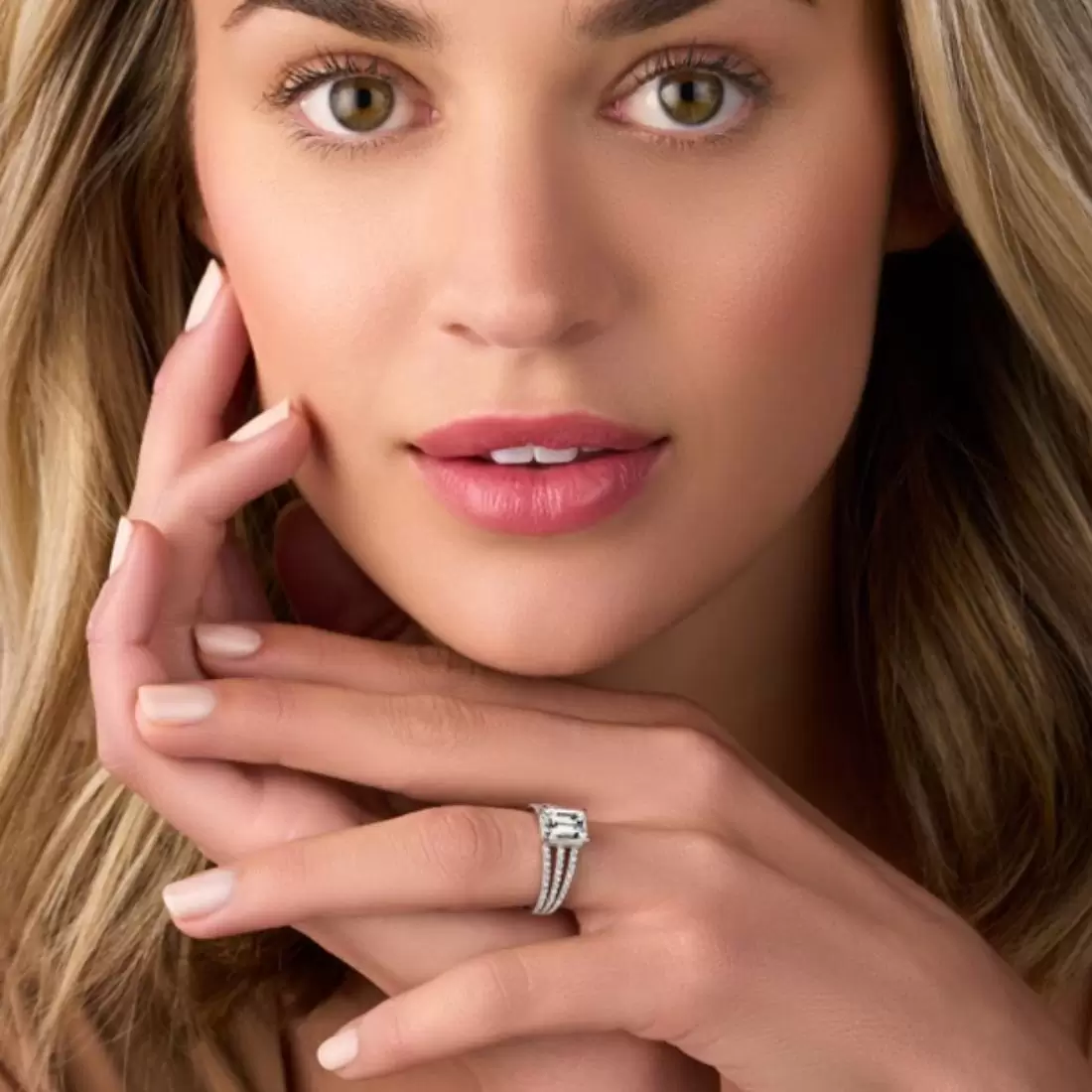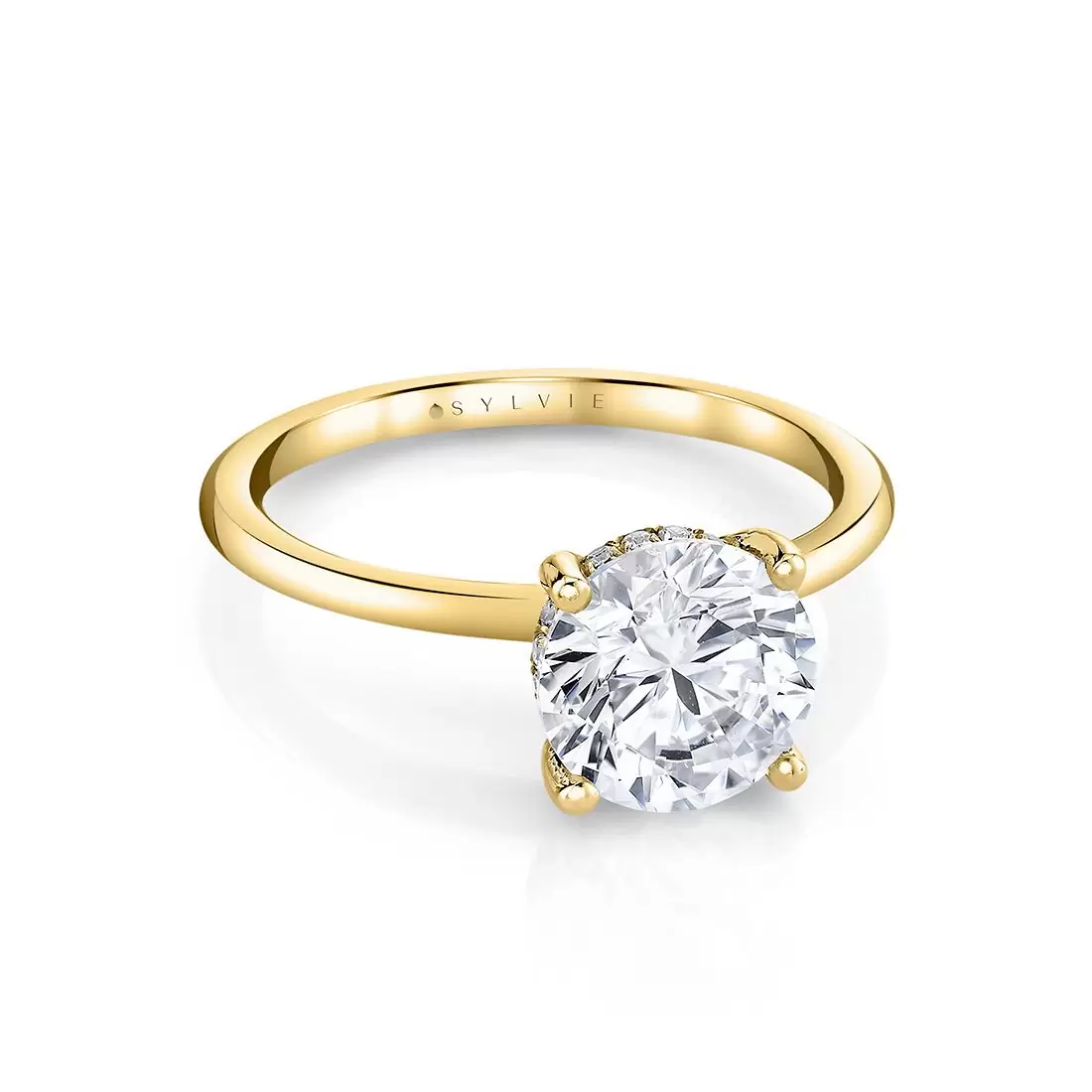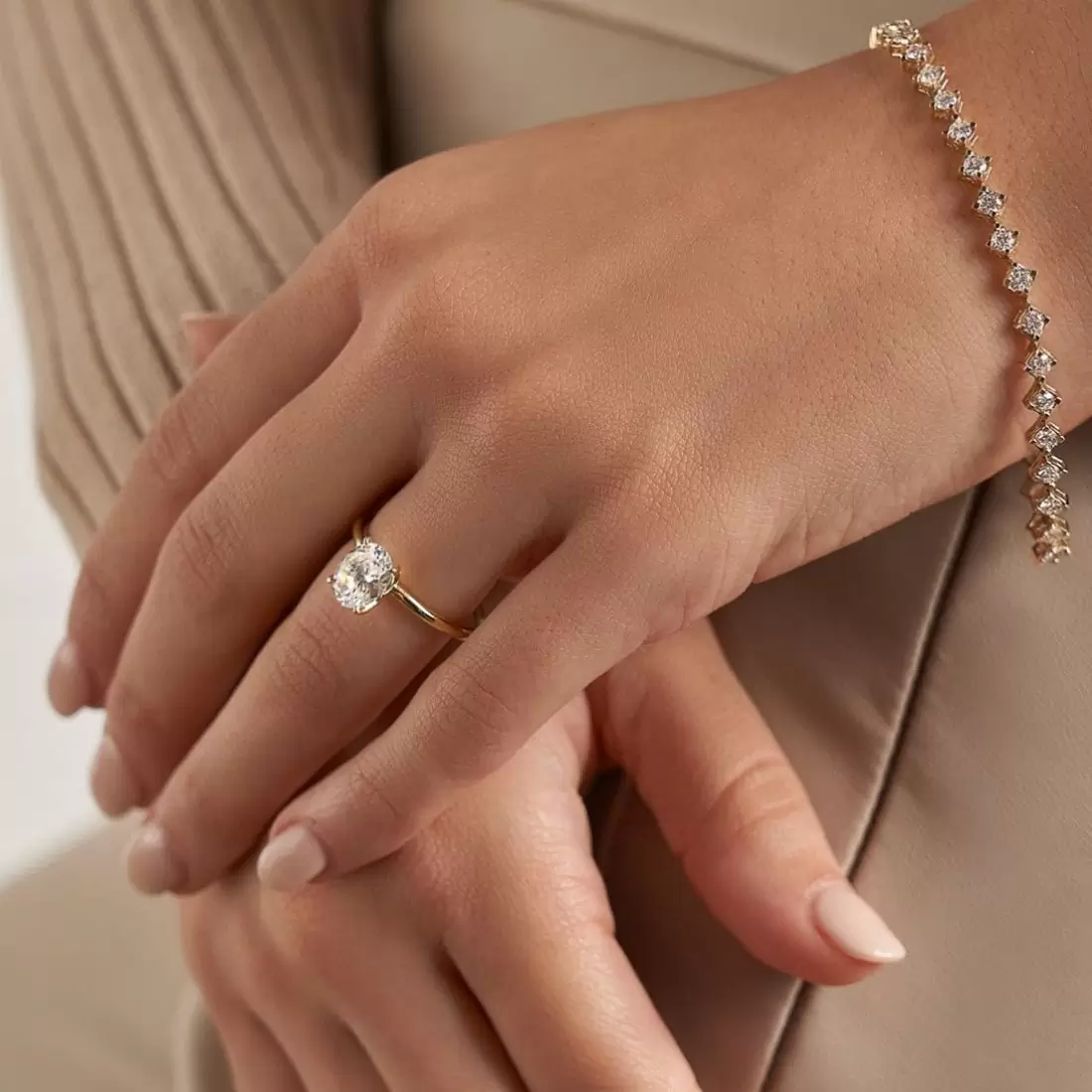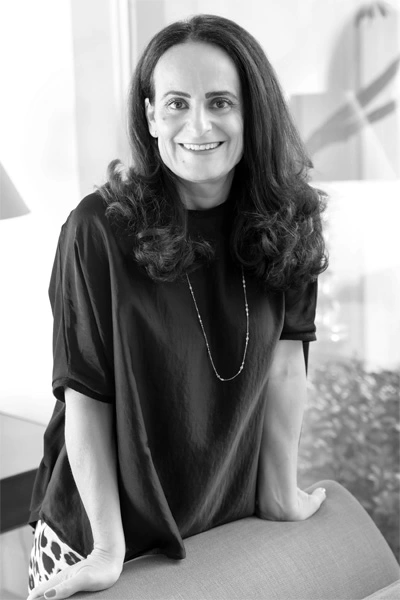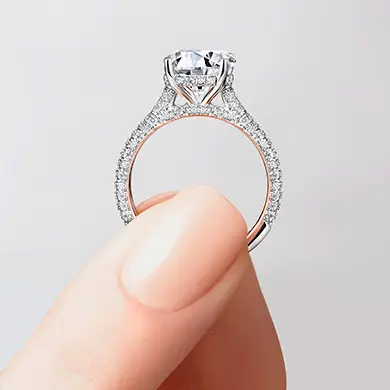Choosing the best color for a diamond significantly influences both its aesthetic appeal and the value of your piece. This grading affects the gem’s interaction with light and its cost. In this blog, we will delve into the complexities of the diamond color scale, exploring how subtle variations can impact the appearance and desirability of diamonds. Understanding diamond color will give you the knowledge you need to make an informed engagement ring, wedding ring, or fine jewelry purchase.

(from left to right) Emerald Cut Classic Engagement Ring – Aimee, Stackable Wedding Band – B1P18, Classic Diamond Wedding Ring – Aimee, Modern Diamond Stackable Wedding Band – Olympia, and Four Prong Offset Diamond Bracelet 1.55 CT
Understanding Diamond Color
Diamond color significantly influences both the aesthetics and the cost of these gemstones.
What Does Diamond Color Mean?
In diamonds, the term “color” generally refers to the presence and visual perception of color within the stone.
Typically, the less color a diamond has, the more valuable it is considered, as colorlessness allows more light to pass through, enhancing the stone’s intrinsic radiance. However, this does not apply to colored diamonds, where deep, vivid colors are highly prized.
The GIA Diamond Color Scale Explained
The Gemological Institute of America (GIA) developed the Diamond Color Scale to standardize the grading of diamonds based on color.
This scale starts with the letter D, representing colorless diamonds, and continues to Z, which indicates diamonds with noticeable brown or yellow tint.
The scale is divided into several categories:
- Colorless (D-F): No color detected. Premium grade, reflecting maximum brilliance.
- Near Colorless (G-J): Slight color is noticed only by trained professionals when compared against diamonds of better grades.
- Faint Color (K-M): Slight color visible to the unaided eye, typically offering a great value for the cost.
- Very Light Color (N-R) and Light Color (S-Z): Increasingly noticeable color, which may affect transparency and brilliance.
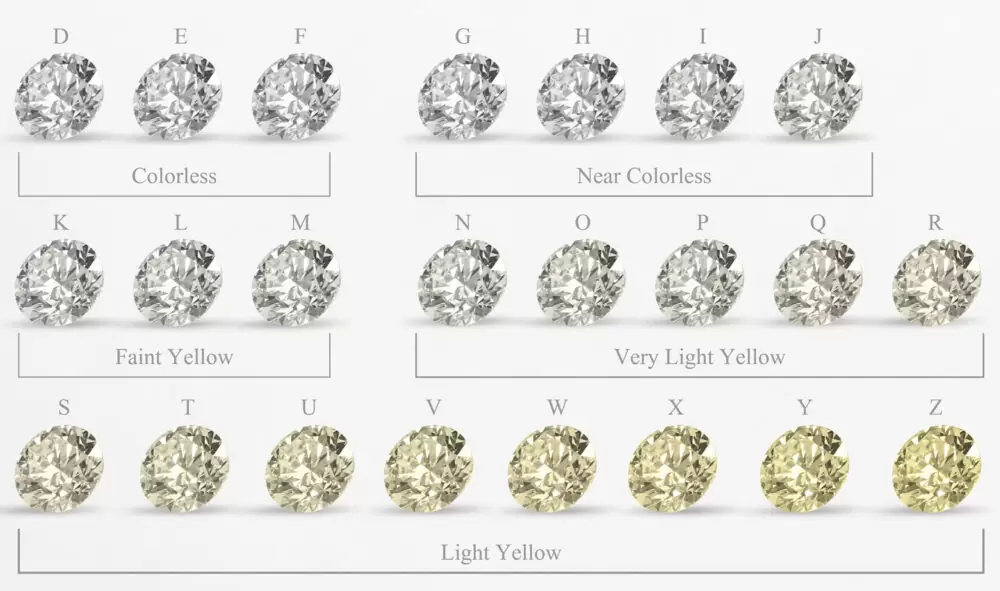
Image sourced from www.diamondhedge.com
How Diamond Color Affects Value and Appearance
The color of a diamond significantly affects both its value and its appeal. Colorless diamonds are typically more expensive because of their rarity and superior ability to transmit light, creating exceptional brilliance.
As diamonds exhibit more color (moving down the GIA scale), their price generally decreases, though this can also depend on market demand and rarity. For colored diamonds, such as pinks or blues, their intensity and hue can increase the diamond’s value, making these vibrant variations highly sought after for their unique beauty and rarity.
Color Grades and Their Implications
The color of a diamond significantly influences both its beauty and its price.
The Staple of Colorless Diamonds (D-F)
Colorless diamonds, graded between D and F, represent the pinnacle of diamond color and are highly sought after for their pure, icy appearance. These diamonds lack any perceptible color and are extremely rare.
Their colorlessness allows for the maximum refraction of light, resulting in a brilliant sparkle highly prized in the diamond industry. This makes them especially desirable for engagement rings and other high-end jewelry, where their unmatched luminance and sparkle can truly shine.
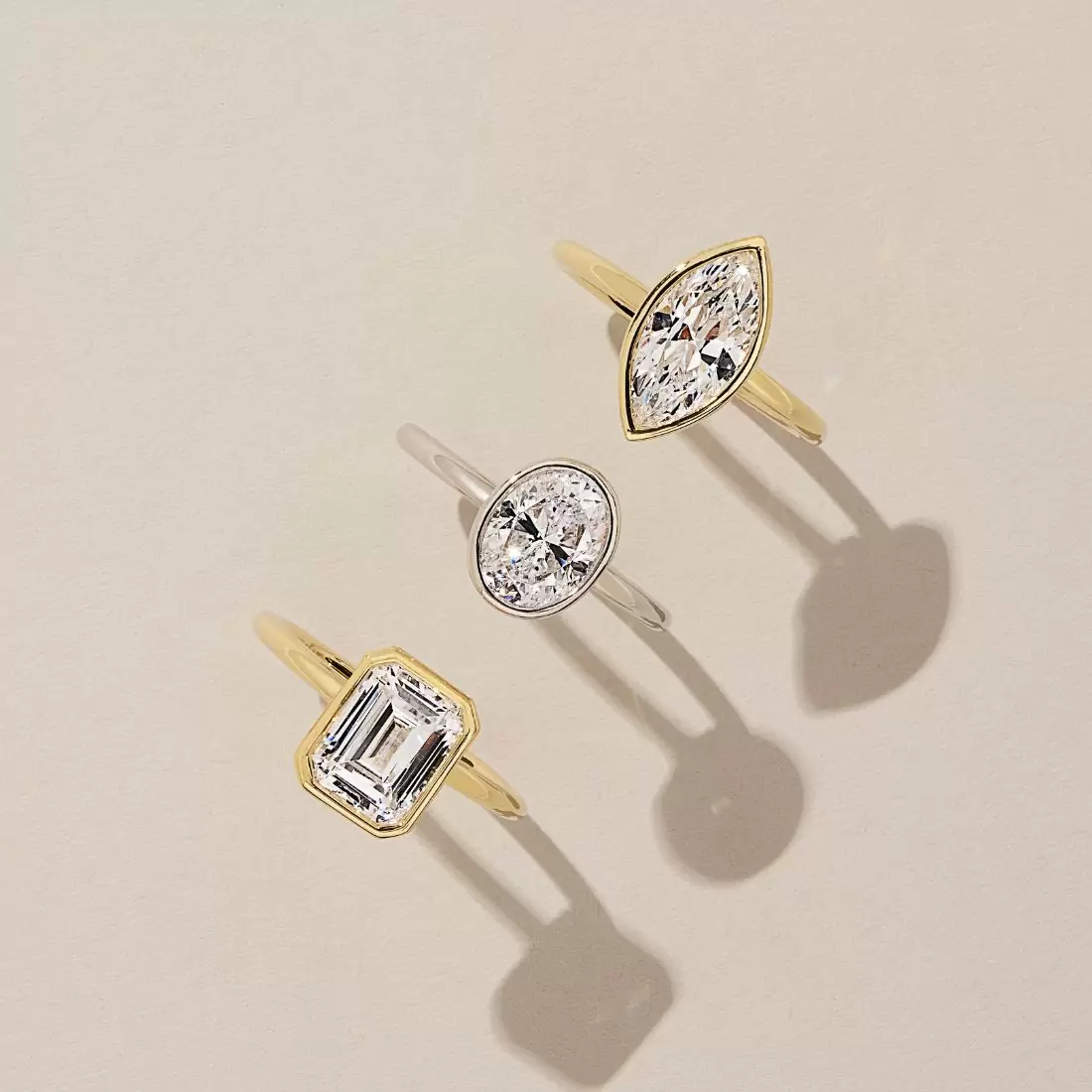
(from top to bottom) Marquise Cut Bezel Set Engagement Ring – Cliodhna, Oval Cut Bezel Set Engagement Ring – Cliodhna, and Emerald Cut Bezel Set Engagement Ring – Cliodhna
Near Colorless Diamonds (G-J): A Balance of Cost and Quality
Near-colorless diamonds, which range from G to J on the color scale, offer a practical balance between aesthetic appeal and affordability. While they contain slight traces of color, they are typically not perceptible to the untrained eye unless compared side-by-side with a colorless diamond.
These diamonds can offer excellent value, providing the beauty close to that of colorless diamonds without the higher price tag, making them a popular choice among budget-conscious buyers seeking quality.
Faintly Colored Diamonds (K-M)
Diamonds graded K to M display a faint yellow or brown tint but can still exhibit considerable brilliance. The subtle coloration of these diamonds can be particularly appealing when set in yellow gold, which complements and often masks the color, enhancing the overall appearance of the diamond.
These faintly colored diamonds are priced lower than higher grades, making them an attractive option for those looking for larger stones or unique aesthetic qualities without a hefty price.
Exploring the Appeal of Colored Diamonds
Beyond the traditional white diamonds, colored diamonds, known as fancy colored diamonds, offer a palette of vibrant options including yellows, pinks, blues, and even greens.
Each color adds a unique character and flair to jewelry, often fetching higher prices due to their rarity and distinctive beauty. Fancy colored diamonds are evaluated more for their color intensity than their lack of color, providing a colorful alternative to the classic diamond look.
Choosing the Right Color for Your Setting
When it comes to choosing a diamond for an engagement ring, the setting plays a key role in enhancing and even altering the perceived color of the stone. Understanding this interaction can help you choose the best diamond color for your desired setting.
The Impact of Setting on Diamond Color Perception
The type of setting can significantly influence how a diamond’s color is perceived. For instance, a bezel setting can make the diamond appear more prominent and slightly tinted. In contrast, a prong setting allows more light to pass through the diamond, potentially enhancing its color and clarity.
It’s important to remember that if you are opting for a lower-grade color diamond, ensure that the rest of the stones in your setting are the same color and clarity. When higher grade diamonds are used on the band, but a lower-grade color is selected for the center stone, sometimes the color differences can be seen with the naked eye.
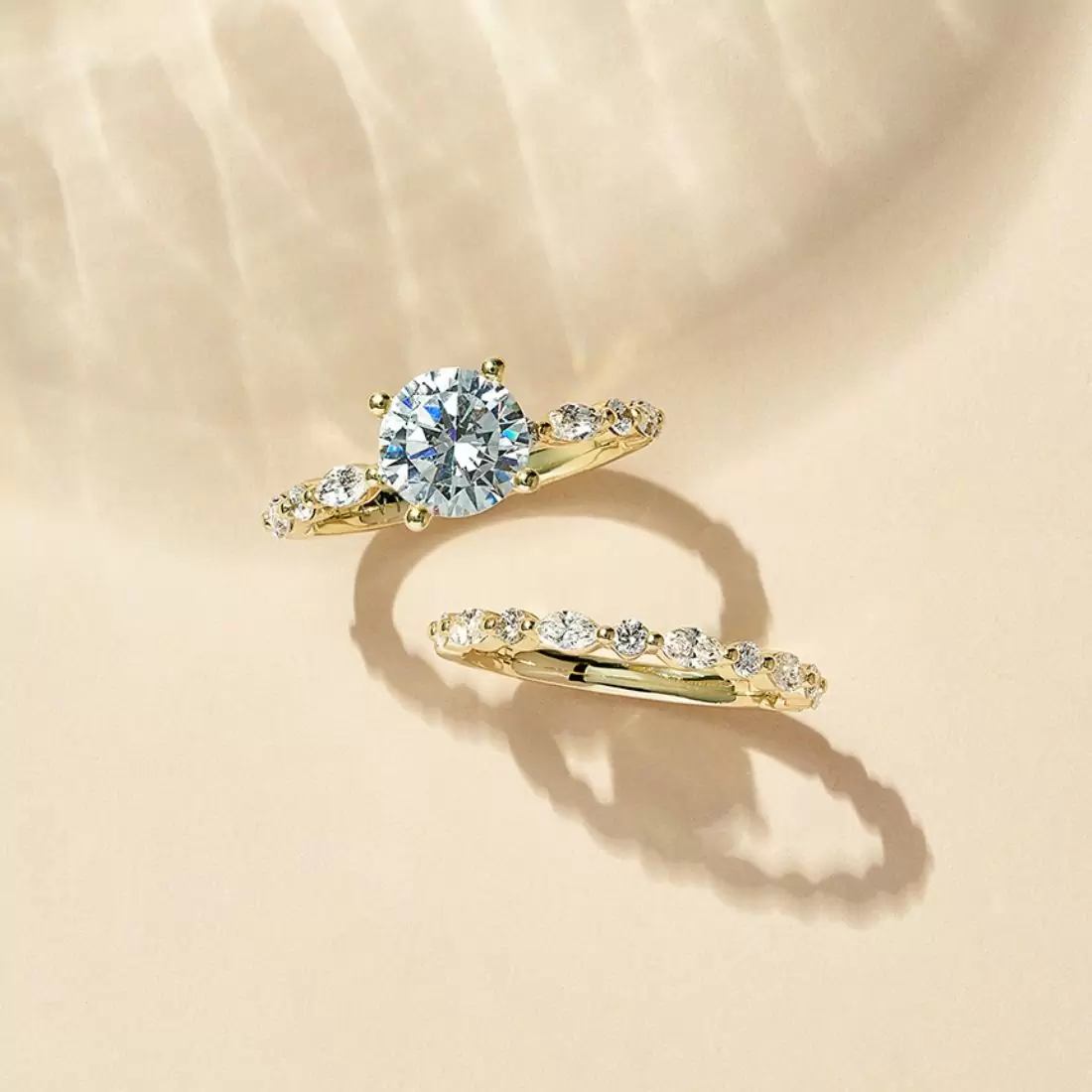
(from top to bottom) Round Cut Unique Engagement Ring – Felicity and Shared Prong Alternating Round and Marquise Wedding Ring – B1P11
Matching Diamond Color to Metal: White Gold vs. Yellow Gold
The choice of metal can also impact the diamond’s appearance. White gold and platinum settings are excellent for higher color grade diamonds as they enhance the stone’s brilliance without adding color.
Yellow gold, on the other hand, can complement lower color grade diamonds by blending with their slight yellow tones, making them appear whiter.
The Visual Impact of Diamond Color in Different Light Conditions
Lighting conditions dramatically affect the perceived color of diamonds. In brighter light, diamonds can exhibit stronger brilliance and fire, which can mask slight color tones. Conversely, the actual color may become more apparent in dimmer lighting, making it crucial to view diamonds under various lighting before deciding.
Conclusion
Choosing the best diamond color involves more than just assessing grades; it’s about understanding how different hues can influence the aesthetics and the character of the jewelry.
Whether opting for the pristine brilliance of a high-grade colorless diamond or the bold statement of a vivid colored gem, seeing the diamonds in person can significantly enhance your appreciation of their unique traits and ensure you select a diamond that resonates with your style and the narrative you wish to convey.
